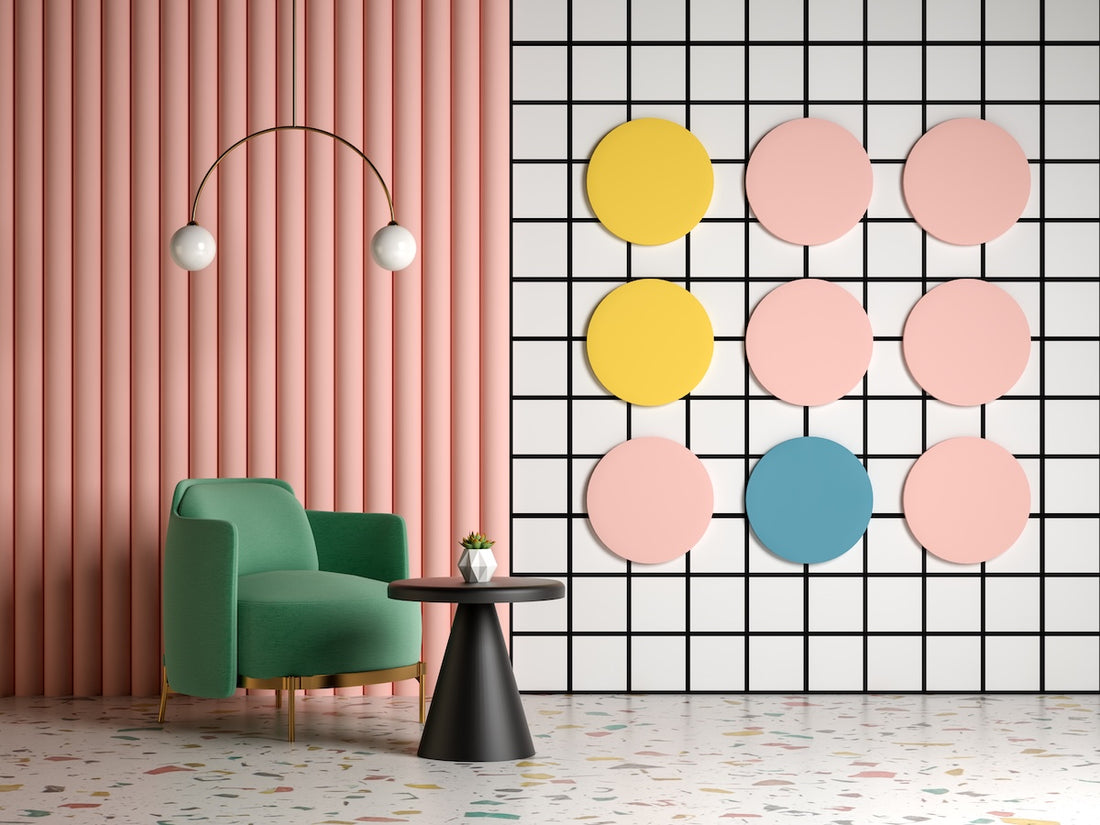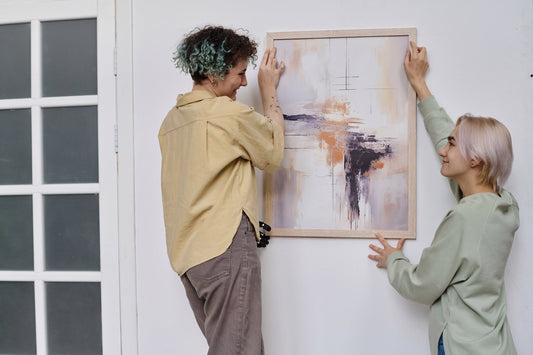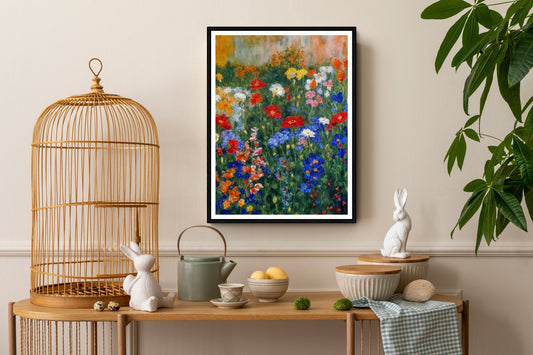
Part 2: Famous Art Movements With Timeline, Art Style, and Defining Works
Art has long been a channel for human expression. It captures the historical, cultural, and even political backdrops of each movement’s respective periods.
In this continuation of our two-part series (Read: Part 1 of Famous Art Movements in History→), we tackle more recent art movements like pop, installation, and contemporary art trends. It looks into the characteristics that make them unique, their key themes, and famous examples.
A Timeline of Famous Art Movements
Throughout the years, art has always showcased humans’ social and cultural evolution. This timeline of later art movements highlights the lasting impact of these art styles, and their corresponding artists and works.
| 1900 - 1945 | Art Deco |
| 1907 - 1922 | Cubism |
| 1960s - 1970s | Minimalism |
| 1960s to Present | Photorealism |
| 1950s - 1970s | Pop Art |
| 1970s to Present | Installation Art |
| 1970s to Present | Contemporary Art |
Art Deco
Art Deco came after art nouveau, taking inspiration from its imaginative creativity. It grounds subjects in elegance and modernity of the World War I era. It originated during a time when people sought glamour and luxury.
Art deco embraced geometric designs, rich colors, and fine materials, reflecting the optimism of the roaring twenties. It blending traditional techniques with modern ones to establish a refined presentation.

A notable example is Tamara de Lempicka’s Young Money with Gloves, representing the sleek, glamorous aesthetic of the era.
Other Notable Artists:
- Erté (Russia/France)
- René Lalique (France)
Cubism (1907–1922)
Following the geometric precision of art deco, cubism added its own flavor to the art style. Cubism broke the rules of visual representation by introducing fragmentation and abstraction.
Pablo Picasso’s Les Demoiselles d’Avignon is a landmark example. It shows geometric distortions and challenges traditional beauty norms, inspired by the visuals of African masks. Cubism originated in France, with Paris at its heart.
Other Notable Artists:
- Georges Braque (France)
- Juan Gris (Spain)
Minimalism (1960s–1970s)
As a response to the complexity of cubism, minimalism sought to distill art to its core components. It emphasizes simplicity and structure and prioritizes sleek lines and functional design. It gives off post-war industrial vibes.
This art style primarily developed in the United States, particularly in New York, as artists shifted away from the dramatic expressions of abstract expressionism.
Donald Judd’s untitled metal installation is an excellent example of this movement.
Other Notable Artists:
- Agnes Martin (Canada/USA)
- Frank Stella (USA)
Photorealism (1960s–Today)
Emerging alongside minimalism, photorealism reintroduced detailed representation. This style closely mimicked photography, focusing on hyper-realistic images of everyday scenes. The increasing use of cameras played a significant role in shaping this movement.
This movement originated in the United States. Chuck Close’s Self-Portrait (Yellow Raincoat) is an iconic example, showcasing meticulous attention to detail.
Other Notable Artists:
- Richard Estes (USA)
- Audrey Flack (USA)
Pop Art (1950s–1970s)
With roots in the United States and the United Kingdom, Pop Art blurred the lines between elite art and popular culture. A notable illustration is Andy Warhol’s Campbell’s Soup Cans, which elevated a standard product to an artistic symbol.
Other Notable Artists:
- Roy Lichtenstein (USA)
- Richard Hamilton (UK)
Installation Art (1970s–Present)
As artists began to incorporate the physical space into their works, they crafted immersive environments that invite viewer participation. This art form often features multimedia components which the audience can experience.
Installation Art is a global phenomenon, highlighting site-specific installations and merging the experience of art with the audience. At this point, modern art trends tend to share characteristics with their commentaries and techniques.

The weather project, 2003 (Tate Modern, London, 2003, Photo: Tate Photography (Andrew Dunkley & Marcus Leith))
A prominent example is Olafur Eliasson’s The Weather Project, which transformed the Turbine Hall at Tate Modern into a radiant, atmospheric setting.
Other Notable Artists:
- Marina Abramović (Serbia)
- Ai Weiwei (China)
Contemporary Art (1970s–Present)
Building on installation art and pop art, contemporary styles investigate new themes and mediums, frequently highlighting social and political issues. This global movement diversity, innovation, and technology, making it one of the most lively movements in the current art scene.
It showcases artists from various cultural backgrounds who offer their unique insights. Yayoi Kusama’s Infinity Mirror Rooms serve as a prime example, combining immersive experiences with themes that resonate on both personal and universal levels.
Other Notable Artists:
- Banksy (UK)
- Jeff Koons (USA)
A Comparison of Art Styles and Themes
Art movements provide the society with a unique viewpoinrt on how different styles and expressions developed throughout history. Each artistic trend has a specific set of techniques, ideas, and themes.
|
Movement |
Period |
Country of Origin |
Key Focus and Common Themes |
Art Style |
|
Art Deco |
1920s–1940s |
France |
Elegant, geometric patterns, luxury materials |
A mix of traditional and modern designs |
|
Cubism |
1907–1914 |
France |
Geometric shapes, fragmented subjects, multiple perspectives |
Structured and fragmented |
|
Minimalism |
1960s–1970s |
United States |
Simplicity, geometric forms, monochromatic palettes, focus on space and structure |
Clean with minimal colors |
|
Photorealism |
1960s–1970s |
United States |
Mimicking photographs, often everyday scenes |
Hyper-detailed |
|
Pop Art |
1950s–1970s |
U.S. and U.K. |
Bright colors, themes of mass media and popular culture |
A mix of traditional, modern, and post-modern techniques |
|
Installation Art |
1970s–Present |
Global |
Site-specific, multimedia |
Interactivity |
|
Contemporary Art |
1970s–Present |
Global |
Social commentary, mixed media |
Innovative tech use |
Understanding famous art movements like Minimalism, Cubism, and Pop Art helps us see how modern creativity evolved. Each movement reflects cultural shifts, new techniques, and bold ideas. Exploring these art styles allows us to connect with the creative forces shaping today’s art world.



